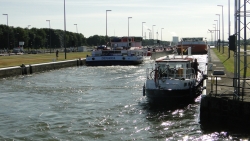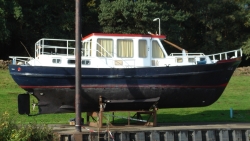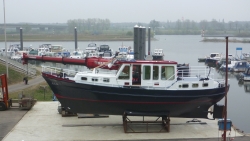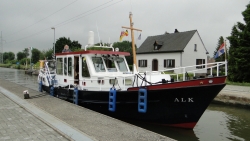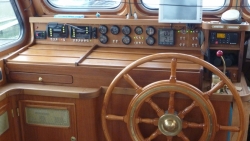165 Kilometre
5 Locks
16 Engine hours
We start in Strasbourg, with its famous Strasbourg Cathedral and the picturesque 'Petit France' district with its typical Alsatian half-timbered houses and several old water mills.
As soon as we have passed the first lock we are on the Rhine, the busiest waterway in Europe. The Rhine is also the border between France and Germany.
We pass 2 more large locks and are then on the section of the Rhine that flows freely over 700 km without locks up to its mouth by Rotterdam.
We notice how on this section, after passing the numerous industrial areas, e.g. near Karlsruhe, the number of big barges increases steadily. For a boater who has not experienced this before, it is certainly a special experience to sail on a river along with this commercial traffic. But thanks to AIS and the good communication via VHF, the ALK can also move safely as a small boat with only 13m between the large pots of up to 135m in length and the even longer pushed convoys.
We dock in Speyer, the formerly free imperial city, with the world's largest preserved Romanesque church (UNESCO World Heritage Site) with numerous tombs of German emperors and kings.
After we have passed the industrial region near Mannheim, we turn off and drive into the mouth of the Neckar.
There is one more lock to pass and then we are in world-famous Heidelberg. We dock on the banks of the Neckar below the old town with the Heidelberg Castle.
As soon as we have passed the first lock we are on the Rhine, the busiest waterway in Europe. The Rhine is also the border between France and Germany.
We pass 2 more large locks and are then on the section of the Rhine that flows freely over 700 km without locks up to its mouth by Rotterdam.
We notice how on this section, after passing the numerous industrial areas, e.g. near Karlsruhe, the number of big barges increases steadily. For a boater who has not experienced this before, it is certainly a special experience to sail on a river along with this commercial traffic. But thanks to AIS and the good communication via VHF, the ALK can also move safely as a small boat with only 13m between the large pots of up to 135m in length and the even longer pushed convoys.
We dock in Speyer, the formerly free imperial city, with the world's largest preserved Romanesque church (UNESCO World Heritage Site) with numerous tombs of German emperors and kings.
After we have passed the industrial region near Mannheim, we turn off and drive into the mouth of the Neckar.
There is one more lock to pass and then we are in world-famous Heidelberg. We dock on the banks of the Neckar below the old town with the Heidelberg Castle.

